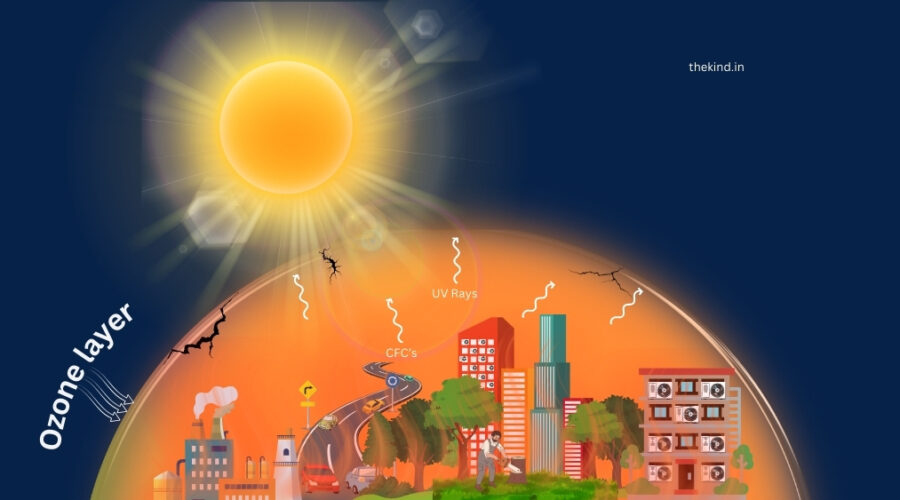Share this
June 19, 2024
Global Weather Report* – This year, many regions around the world are experiencing unprecedented heatwaves, with temperatures soaring higher than usual. Several factors contribute to this alarming trend, combining natural climate variability and human-induced climate change. Here’s an in-depth look at why it’s hotter this year than usual.
1. *El Niño Phenomenon*
One of the primary natural drivers of the current heatwave is the El Niño phenomenon. El Niño is a climate pattern that occurs when the surface waters of the central and eastern Pacific Ocean become significantly warmer than usual. This warming influences global weather patterns, often leading to increased temperatures across many parts of the world. The El Niño event of 2024 is one of the strongest on record, exacerbating already high temperatures.
2. *Global Warming and Climate Change*
The broader and more persistent factor behind the rising temperatures is anthropogenic climate change. The burning of fossil fuels, deforestation, and industrial activities have significantly increased the concentration of greenhouse gases like carbon dioxide and methane in the atmosphere. These gases trap heat, leading to a gradual increase in global temperatures—a trend observed over the past century and intensifying each year.
3. Urban Heat Islands
Urbanization contributes to localized increases in temperature through the creation of “urban heat islands.” Cities with dense infrastructure and minimal green spaces absorb and retain heat more than rural areas. The proliferation of concrete, asphalt, and buildings, combined with heat generated from vehicles, industrial activities, and air conditioning units, makes urban areas significantly warmer. As urban areas expand, the heat island effect amplifies the overall temperature rise.
4. Deforestation and Land Use Changes
Deforestation and changes in land use have reduced the number of trees and vegetation that can cool the environment through the process of transpiration. Forests play a critical role in regulating temperatures by absorbing carbon dioxide and releasing moisture into the air. The loss of these forests leads to drier and hotter conditions. Additionally, agricultural expansion and land development alter the natural landscape, contributing to higher temperatures.
5. *Decreased Albedo Effect*
The albedo effect refers to the Earth’s ability to reflect sunlight. Surfaces like ice and snow have high albedo, meaning they reflect a significant portion of solar radiation. However, as global temperatures rise, polar ice and glaciers melt, reducing the Earth’s albedo. This reduction means more solar radiation is absorbed by the Earth’s surface, further heating the planet. The melting of Arctic sea ice is particularly concerning, as it accelerates warming in the region and contributes to rising global temperatures.
6. Atmospheric Circulation Patterns
Changes in atmospheric circulation patterns can also lead to extreme weather conditions, including heatwaves. Shifts in jet streams, high-pressure systems, and other large-scale atmospheric patterns can result in prolonged periods of high temperatures. This year, a persistent high-pressure system over certain regions has prevented cooler air from circulating, leading to sustained heat waves.
7. Solar Storm
Nasa predicted one of the strongest solar storms in May. The solar storm began on the evening of May 7 with two significant solar flares. Over the next four days, numerous powerful solar flares and at least seven coronal mass ejections (CMEs) were directed toward Earth. Eight of these flares were classified as X-class, the most intense type, with the strongest peaking at X5.8. Since then, the same solar region has continued to produce multiple large flares, including an X8.7 flare on May 14, which stands as the most powerful flare observed in this solar cycle.
8. Increased Frequency and Intensity of Heatwaves
Climate scientists have observed an increase in the frequency and intensity of heat waves over the past few decades. This trend is consistent with predictions made by climate models that simulate the impacts of global warming. Heatwaves are becoming longer and more severe, posing significant health risks and straining energy and water resources.
Impacts of the Heatwave
The unusually high temperatures have far-reaching impacts on both the environment and human society. Heatwaves can lead to heat-related illnesses and deaths, particularly among vulnerable populations such as the elderly, children, and those with pre-existing health conditions. Additionally, high temperatures strain power grids, increase water demand and exacerbate drought conditions in many areas.
Agricultural productivity is also adversely affected, with crops wilting under extreme heat, leading to potential food shortages and economic losses for farmers. Ecosystems and wildlife are at risk as well, with many species struggling to adapt to rapidly changing temperatures.
Mitigation and Adaptation Strategies
Addressing the root causes of rising temperatures requires a concerted global effort to reduce greenhouse gas emissions. Transitioning to renewable energy sources, enhancing energy efficiency, and implementing sustainable land use practices are crucial steps. Reforestation and afforestation initiatives can help restore natural cooling processes and sequester carbon dioxide.
Urban planning must prioritize green spaces, reflective building materials, and sustainable transportation to mitigate the urban heat island effect. Communities should also invest in climate resilience, including early warning systems, heat action plans, and public health initiatives to protect vulnerable populations during extreme heat events.
Conclusion
The unprecedented heatwave of 2024 is a stark reminder of the urgent need to address climate change and its impacts. While natural phenomena like El Niño play a role, human activities are the primary drivers of the long-term warming trend. Immediate and sustained action is required to mitigate the effects of climate change and build a more resilient future for all
Unraveling the Heatwave: Understanding India’s Sweltering Summer of India
As temperatures soar across the Indian subcontinent, the scorching heatwave gripping the nation has raised concerns and prompted questions about its intensity and causes. The year [current year] has already marked itself as one of the hottest in recent memory, with numerous regions experiencing record-breaking temperatures. But what factors contribute to making India so hot this year?
1. Early Onset and Delayed Monsoon:
One significant factor influencing the heatwave in India is the delayed arrival of the monsoon. The monsoon, which typically starts in June and brings relief from the heat, has been delayed or erratic in recent years. This delay prolongs the hot and dry conditions over large parts of the country, exacerbating the heatwave’s impact.
2. Influence of La Niña:
The La Niña weather pattern, characterized by cooler-than-average sea surface temperatures in the central and eastern Pacific Ocean, has also played a role. La Niña tends to enhance temperatures in the Indian subcontinent, leading to reduced cloud cover and less rainfall, thereby intensifying the heatwave.
3. Urban Heat Island Effect:
Urban areas, particularly large cities like Delhi, Mumbai, and Bengaluru, experience what is known as the urban heat island effect. This phenomenon occurs due to human activities and the abundance of concrete, which absorb and retain heat, making cities significantly warmer than surrounding rural areas.
4. Climate Change and Global Warming:
Long-term climate change trends cannot be ignored when discussing the current heatwave. Increasing global temperatures due to human-induced climate change contribute to more frequent and intense heat waves around the world, including in India. These trends suggest that extreme heat events will become more common unless significant efforts are made to mitigate greenhouse gas emissions.
5. Local Weather Patterns and Atmospheric Conditions:
Short-term weather patterns and atmospheric conditions also play a crucial role. High-pressure systems over the region can trap heat and prevent the dispersal of warm air, leading to prolonged periods of hot weather. Additionally, factors such as dust storms and desert winds can further elevate temperatures in specific areas.
Impact on Society and Health
The intense heatwave not only affects daily life but also poses serious risks to public health. Heat-related illnesses such as heatstroke, dehydration, and heat exhaustion become more prevalent during prolonged periods of extreme heat. Vulnerable populations, including the elderly, children, and outdoor workers, are particularly at risk.
Adaptation and Mitigation Efforts
In response to the heatwave, authorities and communities are implementing various adaptation and mitigation strategies. These include heat action plans, the provision of cooling centers, public awareness campaigns on heat safety, and urban planning measures to mitigate the urban heat island effect.
Looking Ahead…
As India grapples with the current heatwave, understanding the complex interplay of natural weather patterns and human-induced climate change is crucial. Efforts to reduce greenhouse gas emissions globally and adapt to changing climate conditions locally will be essential in mitigating the impacts of future heat waves and safeguarding public health and well-being.
In conclusion, while the specific factors contributing to this year’s intense heatwave in India are multifaceted, they underscore the urgent need for proactive measures to address climate change and its consequences. As temperatures continue to rise, resilience and adaptation will be key to building a sustainable future in a warming world.

